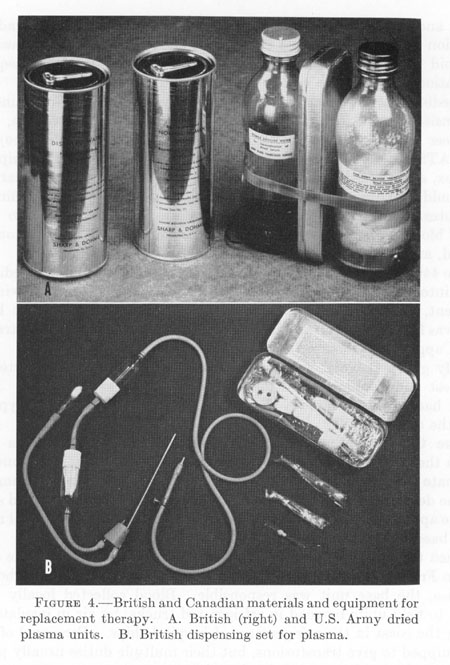Blood plasma
Editor-In-Chief: C. Michael Gibson, M.S., M.D. [1]
|
WikiDoc Resources for Blood plasma |
|
Articles |
|---|
|
Most recent articles on Blood plasma Most cited articles on Blood plasma |
|
Media |
|
Powerpoint slides on Blood plasma |
|
Evidence Based Medicine |
|
Clinical Trials |
|
Ongoing Trials on Blood plasma at Clinical Trials.gov Clinical Trials on Blood plasma at Google
|
|
Guidelines / Policies / Govt |
|
US National Guidelines Clearinghouse on Blood plasma
|
|
Books |
|
News |
|
Commentary |
|
Definitions |
|
Patient Resources / Community |
|
Patient resources on Blood plasma Discussion groups on Blood plasma Patient Handouts on Blood plasma Directions to Hospitals Treating Blood plasma Risk calculators and risk factors for Blood plasma
|
|
Healthcare Provider Resources |
|
Causes & Risk Factors for Blood plasma |
|
Continuing Medical Education (CME) |
|
International |
|
|
|
Business |
|
Experimental / Informatics |
Blood plasma is the liquid component of blood, in which the blood cells are suspended. It makes up about 55% of total blood volume. Blood plasma is prepared simply by spinning a tube of fresh blood in a centrifuge until the blood cells fall to the bottom of the tube. The blood plasma is then poured or drawn off.
Plasmapheresis is a type of medical therapy involving separation of plasma from red blood cells.
Description
Blood plasma contains many vital proteins including fibrinogen (a clotting factor), globulins and human serum albumin. Sometimes blood plasma may contain viral impurities which must be extracted through viral processing.
Blood plasma is clear and has a pale yellow color. It is mainly composed of water, blood proteins, and inorganic electrolytes. Its protein content is necessary to maintain oncotic pressure: this "holds" the blood plasma within the blood vessels, which are "leaky". Blood plasma serves as transport medium for glucose, lipids, amino acids, hormones, metabolic end products, carbon dioxide (CO2) and oxygen (O2). The oxygen transport capacity and oxygen content of plasma is much lower than that of the hemoglobin in red blood cells; the CO2 will, however, increase under hyperbaric conditions. Plasma is the storage and transport medium of clotting factors. Blood serum is blood plasma from which clotting factors have been removed. This is done by allowing fresh blood to clot before spinning it.
Fresh frozen plasma
"Fresh frozen plasma" (FFP) is prepared from a single unit of blood, drawn from a single person. It is frozen after collection and can be stored for one year from date of collection. FFP contains all of the coagulation factors and proteins present in the original unit of blood. It is used to treat coagulopathies from warfarin overdose, liver disease, or dilutional coagulopathy. FFP which has been stored more than the standard length of time is re-classified as simply "frozen plasma," which is identical except that the coagulation factors are no longer considered completely viable.[1]
It is also used to treat TTP (thrombotic thrombocytopenic purpura) because it is not possible to treat this disease by transfusing platelets.
Dried plasma
"Dried plasma" was developed and first used during World War II. Prior to the United States' involvement in the war, liquid plasma and "whole blood" were used. The "Blood for Britain" program during the early 1940s was quite successful (and popular stateside) based in part on Dr.Charles Drew's contribution. A large project was begun in August of the year 1940 to collect blood in New York City hospitals for the export of plasma to Britain. Dr. Drew was appointed medical supervisor of the "Plasma for Britain" project. His notable contribution at this time was to transform the test tube methods of many blood researchers, including himself, into the first successful mass production techniques.
Nonetheless, the decision was made to develop a dried plasma package for the armed forces as it would reduce breakage and make the transportation, packaging, and storage much simpler. [2]
The resulting Army-Navy dried plasma package came in two tin cans containing 400 cc bottles. One bottle contained enough distilled water to completely reconstitute the dried plasma contained within the other bottle. In about three minutes, the plasma would be ready to use and could stay fresh for around four hours. [3]
Following the "Plasma for Britain" project, Dr. Drew was named director of the Red Cross blood bank and assistant director of the National Research Council, in charge of blood collection for the United States Army and Navy. Dr. Drew argued against the armed forces directive that blood/plasma was to be separated by the race of the donor. Dr. Drew argued that there was no racial difference in human blood and that the policy would lead to needless deaths as soldiers and sailors were required to wait for "same race" blood.
By the end of the war the American Red Cross had provided enough blood for over six million plasma packages. Most of the surplus plasma was returned stateside for civilian use. Serum albumin replaced dried plasma for combat use during the Korean War.[4]

References
ca:Plasma sanguini
cs:Krevní plazma
da:Blodplasma
de:Blutplasma
eu:Odol-plasma
ko:혈장
is:Blóðvökvi
it:Plasma (biologia)
he:פלזמה (דם)
nl:Bloedplasma
no:Blodplasma
nn:Blodplasma
om:Plasma dhigaa
nds:Bloodplasma
simple:Blood#Plasma
sk:Krvná plazma
sr:Крвна плазма
fi:Veriplasma
sv:Blodplasma
th:น้ำเลือด
ur:آبدم